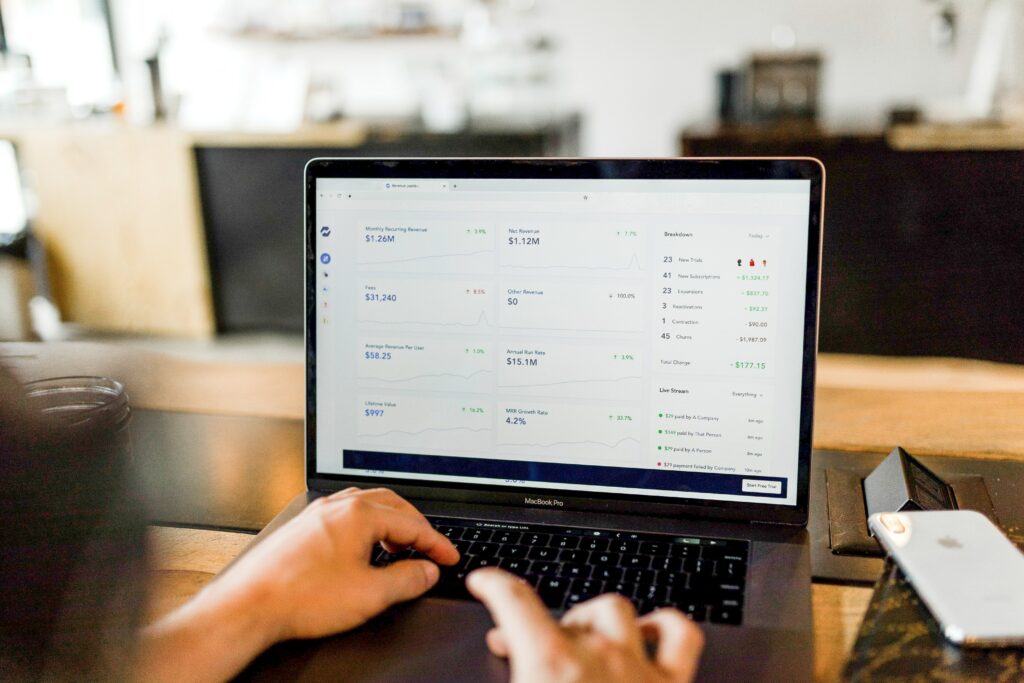Pay-Per-Click (PPC) advertising is evolving rapidly, driven by advancements in technology and shifts in consumer behavior. The future of PPC advertising looks promising, with emerging technologies set to transform how businesses approach digital advertising. In this blog post, we’ll explore the latest trends and technologies shaping the future of PPC. From AI and machine learning to voice search and augmented reality, let’s delve into what the future holds.
AI and Machine Learning in PPC
Artificial Intelligence (AI) and machine learning are revolutionizing PPC advertising, bringing automation and optimization to new levels of precision and efficiency.
Personalization through AI
AI is revolutionizing the personalization of PPC ads. By leveraging vast amounts of data, AI algorithms can create highly personalized ad experiences, tailoring messages to individual user preferences and behaviors. This level of personalization means delivering the right message to the right person at the right time, significantly increasing engagement and conversion rates. AI helps marketers understand customer behavior in real-time, allowing for dynamic adjustments in ad content that align with user interests and past interactions. This not only enhances user experience but also maximizes the effectiveness of ad spend by targeting the most relevant audience segments with precision.
Predictive Analytics for Ad Performance
Predictive analytics, powered by AI, is becoming a game-changer in PPC. By analyzing historical data, predictive models can forecast the future of PPC Advertising, enabling advertisers to make data-driven decisions. Predictive analytics can assist in budget allocation, bid adjustments, and targeting strategies, reducing guesswork and enhancing campaign performance. For instance, AI can predict which keywords are likely to perform best based on past performance and current market trends, allowing advertisers to optimize their campaigns proactively. This leads to more efficient ad spend and higher ROI, as campaigns are continuously refined based on predictive insights.
Automation Tools Revolutionizing PPC
Automation tools are becoming indispensable in the PPC landscape, streamlining various aspects of campaign management and optimization.
Campaign Management Automation
Campaign management automation tools simplify the process of creating, monitoring, and adjusting PPC campaigns. These tools handle repetitive tasks such as ad creation, keyword selection, and performance tracking, freeing up marketers to focus on strategic decision-making. Platforms like Google Ads’ Smart Campaigns and Microsoft’s Advertising Automation Suite offer features such as automated ad copy generation, budget recommendations, and real-time performance monitoring. These tools use machine learning to optimize campaigns continuously, ensuring that ads are shown to the right audience at the right time, maximizing effectiveness and efficiency.
Bid Management Systems
Bid management is a critical component of PPC success, and automation tools are making it easier to manage bids effectively. Advanced bid management systems use algorithms to adjust bids in real-time based on various factors such as competition, budget constraints, and performance data. Tools like Optmyzr and WordStream Advisor provide sophisticated bid management solutions that analyze market trends and adjust bids to optimize ad placement and budget utilization. By automating bid adjustments, these tools ensure that ads remain competitive without overspending, leading to better ad performance and higher ROI.
The Rise of Voice Search in PPC
Voice search is transforming the way people interact with search engines, and PPC strategies must adapt to this shift.
Optimizing for Voice Search
Optimizing for voice search requires a different approach than traditional text search. Voice queries tend to be longer and more conversational, reflecting natural language patterns. Marketers need to focus on long-tail keywords and phrases that mimic spoken language. Tools like Google’s Voice Search Console can help identify voice search trends and optimize ad content accordingly. Ensuring that ads are tailored for voice search can improve visibility and relevance, capturing the growing audience of voice search users. This involves creating content that answers specific questions and provides direct, concise information that aligns with voice search queries.
Impact on Keyword Strategies
Voice search is reshaping keyword strategies in the future of PPC advertising. Unlike text-based searches, voice searches often involve complete sentences and questions. Advertisers must adapt by focusing on the intent behind these queries and using more descriptive, conversational phrases. Understanding how users phrase their questions can help in crafting ads that meet their needs effectively. This shift requires a deeper understanding of user behavior and intent, leading to more precise targeting and improved ad performance. Advertisers can stay ahead in the evolving PPC landscape by incorporating natural language processing and voice search optimization techniques.
Advanced Audience Targeting Techniques
Emerging technologies are enabling more sophisticated audience targeting methods, enhancing the precision and effectiveness of PPC campaigns.
Behavioral Targeting
Behavioral targeting leverages data on user behavior to deliver highly relevant ads. By tracking actions such as website visits, purchase history, and content consumption, advertisers can create detailed user profiles. These profiles help in targeting ads to users based on their past behaviors and predicted interests. Behavioral targeting increases the likelihood of engagement and conversion by showing ads that resonate with users’ current interests and needs. It allows for dynamic adjustment of ad content and targeting parameters, ensuring that ads remain relevant and engaging over time.
Contextual Targeting
Contextual targeting focuses on the context in which ads are displayed, rather than relying on user data. It analyzes the content of a webpage or app to determine the most relevant ads to show. This method is privacy-friendly and aligns ads with the user’s current interests, increasing the chances of engagement. Tools like Google AdSense and Outbrain are popular for contextual ad placements, providing automated solutions that match ads to content contextually. This ensures that ads are relevant to the environment in which they appear, enhancing user experience and ad effectiveness.
The Integration of Augmented Reality (AR) in PPC
Augmented Reality (AR) is emerging as an innovative tool in PPC advertising, offering immersive experiences that engage users in new ways.
AR Ad Formats
AR ad formats are interactive and engaging, allowing users to visualize products in their real-world environment. For instance, beauty brands use AR to let users try on makeup virtually, and furniture companies enable customers to see how items would look in their homes. These interactive experiences create a more engaging and memorable ad experience, driving higher engagement rates and conversion. Platforms like Instagram and Snapchat are leading the way in AR advertising, providing tools and formats that make it easy for brands to create and deploy AR ads.
User Engagement through AR
AR enhances user engagement by offering interactive, immersive experiences. Users can interact with ads in a meaningful way, leading to higher engagement rates and better brand recall. AR technology is still evolving, but the future of PPC Advertising is significant. Brands that adopt AR early can differentiate themselves in a crowded digital marketplace, providing unique and engaging experiences that capture user attention. As AR technology becomes more accessible and widespread, it will become a powerful tool for advertisers looking to create compelling and effective PPC campaigns.


